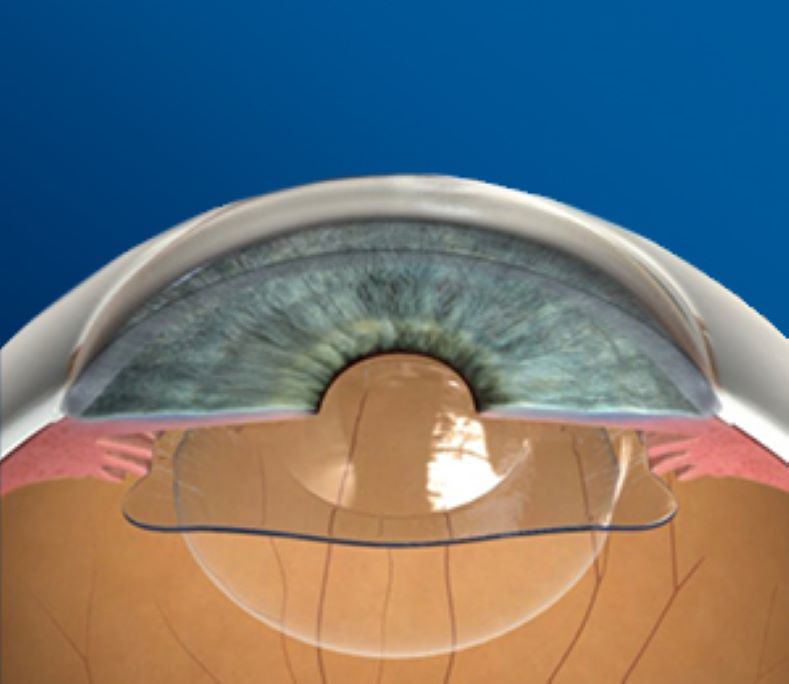Vision plays a pivotal role in our quality of life. However, conditions such as cataracts, presbyopia, or extreme refractive errors can blur the clarity we once took for granted. In such cases, Lens Exchange Surgery, a revolutionary procedure, can restore and even enhance vision, offering individuals a new lease on life. In this comprehensive guide, we delve into the nuances of lens exchange surgery, exploring its benefits, procedure, recovery, and why it’s a popular choice for those seeking visual freedom.
What is Lens Exchange Surgery?
Lens exchange surgery, medically known as Refractive Lens Exchange (RLE) or Clear Lens Extraction, involves the replacement of the eye’s natural lens with an artificial intraocular lens (IOL). This procedure is similar to cataract surgery but is performed primarily to correct vision issues rather than removing a cataract.
RLE is an ideal option for individuals with:
- Presbyopia (age-related difficulty in focusing on near objects)
- Extreme refractive errors (severe nearsightedness or farsightedness)
- Early cataracts or lens opacities
By replacing the natural lens, this procedure offers improved vision and reduced dependency on glasses or contact lenses.
How Does It Work?
The procedure involves a series of steps:
- Evaluation and Consultation: An in-depth eye examination is conducted to assess vision and overall eye health. Your eye surgeon determines the appropriate type of intraocular lens (IOL) to match your visual needs.
- Anesthesia and Preparation: On the day of the surgery, local anesthesia (usually eye drops) is used to numb the eye. The procedure is virtually painless.
- Lens Removal: A small incision is made on the cornea, and the natural lens is gently removed using ultrasound or phacoemulsification technology.
- IOL Implantation: The customized intraocular lens is inserted and positioned into place. The incision usually self-heals without requiring stitches.
The entire procedure is performed on an outpatient basis and typically takes about 20-30 minutes per eye.
Types of Intraocular Lenses (IOLs)
The choice of IOL significantly impacts post-surgery vision. Several options are available, tailored to individual needs:
- Monofocal Lenses: Provide clear vision at a single distance (near, intermediate, or far).
- Multifocal Lenses: Offer clarity across multiple distances, reducing the need for glasses.
- Toric Lenses: Correct astigmatism along with other refractive errors.
- Extended Depth-of-Focus (EDOF) Lenses: Provide a continuous range of vision, enhancing depth perception and reducing halos or glare.
Your eye surgeon will guide you in selecting the best lens option based on your lifestyle, vision goals, and ocular health.
Benefits of Lens Exchange Surgery
Lens exchange surgery comes with a plethora of advantages:
- Enhanced Vision Quality: Patients often achieve sharp, clear vision at various distances.
- Freedom from Glasses: Many individuals enjoy reduced dependency on corrective eyewear.
- Permanent Solution: Unlike laser surgeries, which may need adjustments over time, RLE offers a lasting correction.
- Prevention of Cataracts: By replacing the natural lens, the risk of developing cataracts is completely eliminated.
- Quick Recovery: The procedure is minimally invasive, allowing for rapid healing and minimal downtime.
- Improved Quality of Life: Better vision boosts confidence, safety, and overall enjoyment of daily activities.
Who is a Suitable Candidate?
While lens exchange surgery is effective, it’s not for everyone. Ideal candidates include:
- Adults aged 40 and above with presbyopia.
- Individuals with severe refractive errors not suitable for LASIK or other laser vision correction procedures.
- Those seeking a preventative approach against cataract development.
Your ophthalmologist will assess your specific needs and health history to determine if you’re a good fit for the procedure.
Recovery and Post-Operative Care
Recovery from lens exchange surgery is generally swift and uncomplicated. Here’s what you can expect:
- Initial Healing: Vision begins to improve within a day, though slight blurriness or halos around lights may persist initially.
- Follow-Up Visits: Regular check-ups ensure the eye is healing properly and the IOL is functioning optimally.
- Daily Activities: Most patients resume everyday activities within a week, though strenuous work or heavy lifting should be avoided during recovery.
- Eye Drops and Medications: Anti-inflammatory and antibiotic eye drops are prescribed to promote healing and prevent infection.
Strictly following post-operative care instructions is crucial for optimal outcomes.
Safety and Risks
Lens exchange surgery is considered safe and effective when performed by a skilled surgeon. However, as with any surgical procedure, there are potential risks, including:
- Infection
- Inflammation
- Glare or halos around lights
- Retinal detachment (rare)
- Residual refractive error
Fortunately, these complications are uncommon and can often be managed successfully with prompt treatment.
Why Choose Dr. Rachana Tiwari Patil for Lens Exchange Surgery in Pune?
For those in Pune, Dr. Rachana Tiwari Patil, a highly skilled ophthalmologist and phaco-refractive surgeon, offers unmatched expertise in lens exchange surgeries. With advanced training and a patient-centered approach, Dr. Rachana combines technical precision with genuine care to deliver outstanding results.
Her team at Chetna Multispeciality Hospital is equipped with state-of-the-art technology to ensure a safe and seamless surgical experience. From initial consultation to post-surgical follow-ups, you’ll receive comprehensive support every step of the way.
FAQs About Lens Exchange Surgery
1. How long does the surgery take? The procedure usually takes about 20-30 minutes per eye and is performed on an outpatient basis.
2. Is lens exchange surgery painful? No, local anesthesia ensures the procedure is painless. Mild discomfort may be experienced during recovery.
3. Can both eyes be treated on the same day? It’s common to treat one eye at a time, with a gap of 1-2 weeks between surgeries.
4. Are the results permanent? Yes, the artificial lens lasts a lifetime and eliminates the risk of cataracts.
Take the First Step Toward Clearer Vision
If blurry vision is holding you back, it’s time to consider lens exchange surgery. With experienced surgeons like Dr. Rachana Tiwari Patil and cutting-edge facilities at Chetna Multispeciality Hospital, you can confidently step into a world of clarity.
Book your consultation today and discover how lens exchange surgery can transform your vision — and your life. Because seeing is believing!
For Consultation Contact us on 9168690448
Website – www.chetnahospital.co.in
Address – Chetna Hospital, Sambhajinagar, MIDC, G Block, Near Rotary Club, Chinchwad 411019
.
.
.
#hospital#pune#pcmc#chinchwad#medical#medicalservices#dryeyetreatment#dryeyerelief#dryeyedisease#dryeyetherapy#catract#catractsurgery#catracteyesurgery#catracteyeoperation#eyedoctor#eye#glaucoma#conjunctivitis#ophthalmologist#eyediseases#eyepain#pinkeye#hazeleyes#myopia#eyeinfection#amblyopia#dryeyesyndrome#eyeproblems#motibindu#motibinduoperation













